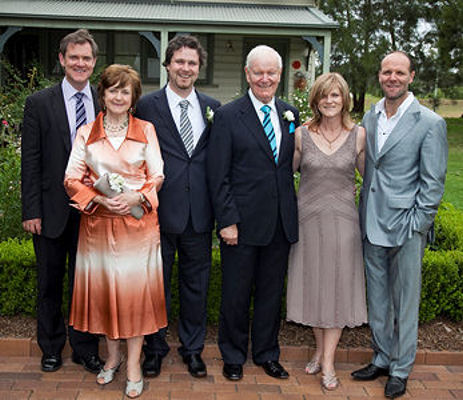Martin Coleman - Australia 1958
1st Generation Australian
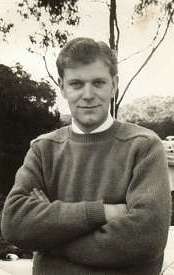
Martin Coleman - Sydney1958
Four of the children born to Pat and Norah Coleman of Cahermaculick, Shrule, Co Mayo, Ireland settled in Sydney in the 1950's and 60's:
Michael (Mick) (1933) in 1957 after two years in North Queensland; Martin (1937) in 1958 and Delia (1942) and Margaret (1945) in 1966.
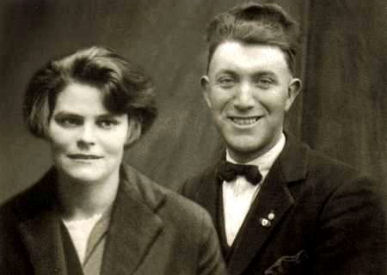
Norah & Pat Coleman 1933
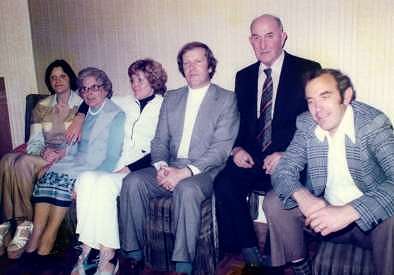
Mick, Martin, Delia & Margaret
Generation 6 (G6) of our family tree in Clan Coleman lists the children born to Pat and Norah Coleman. (Click here for Family Tree in Clan Coleman.) I come in as the third son and child born on 18th June, 1937 (My Birth Certificate has in error the 26th July). I was educated at Gortjordan National School, Co Mayo, and at the Sacred Heart College, Western Road, Cork City and the Sacred Heart College in Carrignavar, Co Cork.
After leaving Carrignavar in June 1954, I had quickly lost contact with my classmates. The lack of jobs in Ireland at the time meant that I followed in the footsteps of millions of Irish before me. Time and circumstances over such a long period had seen to it that it was very much part of the Irish psyche to sadly accept and indeed expect the country’s youth to emigrate. So for me and those tens of thousands like me, the pier beckoned as it were and inevitably its call was answered.
My brother Mick who had come home for Christmas 1954 didn’t look any the worse for having worked most of the year in Birmingham, and so when he was returning on the 4 January 1955, I joined him for the trip across the Irish Sea. I was seventeen and a half at the time and it was a bitterly cold and miserable Birmingham that greeted me. I don’t think I had ever seen so much snow and ice in the one place at the same time. I had experienced as a youth heavy snow falls in Mayo and Cork but nothing like this. Fortunately, I was able to stay at the same boarding house as Mick, but I never got to like it there. Early next morning and knee high in snow, we made our way to the nearest tram stop guided through the dark and smog by a few pale gas lamps. Mick was returning to work at Cadbury’s and knew that they were looking for employees. With about five others, I was led into this big room and handed a heap of forms to read and complete by this mustachioed and military like official who obviously took pride in having won the war for England and was now enjoying his just reward. What followed was the first of a number of interviews that took up the whole day.
I enjoyed working at Cadbury’s. Most members of the team I joined were from Germany and were quite intelligent having completed second level and some third level education. I was the youngest member of the team, fresh out of college and a Catholic one at that. I didn’t realise I had so many beliefs to defend or justify, and so coming to work each day was like having to tackle a new treatise. Traditions, customs, attitude towards life and religion all featured in our discussions and debates. At first it was rather daunting but I did get to like it and certainly missed it when I left there four months later to join the City Corporation in order to become a bus driver. By then Mick and I had moved to lodgings in Grantham Road, Stoney Lane. A couple of months later, Mick sailed for Australia. Of course I was too young to apply for a public transport licence and so had to assume our oldest brother’s identity. It was strange at first responding to his name. I enjoyed my eighteen months on the buses, driving and travelling to new places and meeting so many different people.
When I moved to London at the beginning of 57, I worked for the British Railways Department in its office at Cricklewood. During my free time, I studied Mechanical Engineering in 1957 and 1958 at the Baker Street Polytechnic.
When national service began to raise its head, I decided to head for Australia. In early May, I attended an appointment at Australia House, completed all the forms, underwent a medical and received the necessary vaccination. In a meeting that followed later that afternoon, I was given my identification document and told to be ready to sail in June at fairly short notice. As it so happened, the telegram arrived on 17 June, the day before my 21st Birthday. After fixing things up at work next morning, I headed home as I wanted to see my family before sailing. It was lovely to see my family again and while Dad and Mam were very sad to hear of my plans, they found some comfort in the knowledge that I would be joining Mick in Sydney. The weather was beautiful as I drove around with Dad to visit my relatives and I wished I had a couple of weeks rather than just six days. I remember our visit to my Grandparents in Glencorrib as if it were yesterday. Mam didn’t want to come with us. It was obviously too much for her. I can clearly recall how, when we were all seated at the table to one of the biggest bacon and cabbage meals I had ever seen, Grandad stood up and stayed standing there ever so quietly despite being told by Grandma to sit down and have his dinner. I could see that Dad was trying to act as if nothing was happening. Then I felt the gentle grab of my hair to the words, “Sure I’ll never see ye and Sonneen (Mick) again it’s so far ye’re goin’”. Back home, my memory of the scene in the kitchen as I left Mam and my sisters could be no more sharply etched. Mam was in a terrible state. The tyranny of distance back then must have been so real and troubling to our parents. I often think about this and how unfair it was to have to put our parents through such an ordeal. Noel and Dad took me to Galway to catch the train for Dublin. I had the worst headache I have ever experienced and as I boarded the train Dad asked two students returning home to England from University College Galway to look after me as I wasn’t well. As the train pulled away, Dad kept running along the platform waving goodbye hat in hand. This and our parting in Cork eight years earlier are for me very special memories of my father.
Packing completed, I spent some time with John Joe and Bridie before setting out from 43 Lady Margaret Road Kentish Town on the morning of 26 June 1958 for Tilbury Dock on the Thames. About noon, I was a passenger aboard the ‘SS Orion’ as she pulled away from the quay on her voyage to Sydney. She was the biggest ship I had ever seen and I thought she was beautiful. I liked everything about her. She was considered to be one of the most famous ships on the Australian immigrant run as the first British liner with air conditioning in all her public rooms. After meeting a number of passengers on the first afternoon aboard, I couldn’t get over my luck in scoring such a comfortable cabin on C Deck which I shared with a young industrial chemist from Leeds. It came with two bunks alongside a couple of windows and had its own bathroom as well as washing and ironing facilities. I quickly realised, however, that my cabin mate’s expectations of Australia were quite different from my own. They were obviously derived from select readings about Englishmen who had transcended their status as only an Englishman can do with all the trappings that this type of success suggests. Yes, he was going to be surrounded by servants and maids and butlers in the colony, and in no time at all would feature in the same literature that ironically was the source of his delusions. Despite the fact that, like most others aboard, he was travelling under the Assisted Migrant Scheme, or the ‘10 Pound Scheme’ as it was more popularly known, he remained unfazed. He was no adherent of egalitarian principles and if by chance he had heard of the egalitarian Australian, he must have thought it was one of those myths associated with little known places.
On the morning of 3rd August 1958, the ‘SS Orion' docked in Sydney. I disembarked to a very warm welcome that really exceeded my expectations. Mick, Bill McDonagh, Fr Con Sexton, Lenore Sowden and a host of others were there to greet me. It was absolutely lovely and took me completely by surprise. Fr Con who was Parish Priest of Dover Heights had two sisters who lived in my home town of Shrule. He had served as Chaplin to the Australian forces in Singapore and when it fell to the Japanese he was captured and imprisoned in the infamous Changi Prison until the end of the war. In fact Mick and his friends had organised a welcoming party the following weekend at the home in Lenthall Street Kensington where we were staying at the time. Everyone including the landlady enjoyed the evening and I met a lot of wonderful people.
A month or so later, Mick and I moved into a flat in Todman Avenue, Kensington. I used to walk from there daily to the Motor Registry Department in Rosebery where I worked. Hardly a weekend went by without our calling to visit Fr Con and we weren’t the only visitors. We had some great times at Dover Heights. It was there that I met Justice McKeown who persuaded me to take a teaching position at Waverley College at the beginning of 59. While there I enrolled in part-time studies at Sydney University and left Waverley at the end of 1960 to attend full-time. I completed my teacher training at Sydney Teachers’ College within the University. I continued my studies at the Univeresity of New England , Armidale, after taking up teaching at Punchbowl Boys’ High School where I became Head of Department and later Deputy Principal and Acting Principal for ten years before retiring in 1997.
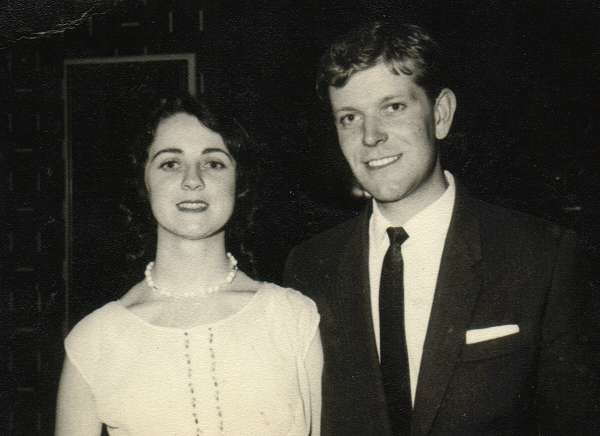 Patricia Lynch & Martin Coleman 1959 |
During Easter 1959, while on a trip to the Central Coast with some friends, I met Patricia Lynch, daughter of Tom and Margaret Lynch of Sydney. We were married on 2 January 1963 and so began another branch of the Coleman Clan. Tom Lynch's Grandfather and Grandmother, Michael Lynch and Mary Fitzgerald, were born in Patrick's Well, Co Limerick, and Limerick respectively. Margaret Lynch's parents were also from Ireland. Her mother, Bridget (Kennedy) Kearns, was born in Glown near

Tom & Margaret Lynch
Neanagh, and her father, Thomas Kearns, was born in Galway. Patricia has gathered over the years considerable information about her ancestry on both her father and mother’s sides of the family. I can recall the very special emotional impact the visit to Glown and the home of her Grandmother had on Patricia. It was wonderful to be part of it. Today, a very small part of that homestead in the form of a slate enjoys pride of place in our possession. (Please sign in to Clan Coleman for full version.)
2nd Generation
Dominique (1964), Martin Pat (1965), Michael (1966), Bernadette (1968) & Kieran (1977)
 |
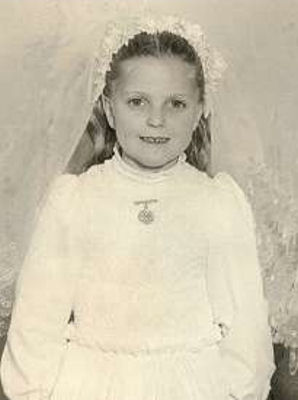 |
|
| Martin Coleman (1937) married Patricia Lynch (1937) in 1963 - here with Sons Martin Pat (1965), Michael (1966) & Daughters Dominique (1964) & Bernedette (1968) | Dominique passed away on 1st January, 1976 just before her 12th Birthday |
Martin & Patricia Coleman with Daughter Bernadette & Sons Martin Pat (L), Michael(R), & Kieran born 1977 |
3rd Generation
Ciara & Matthew Conor, Luke & Siobhan Flynn,Cillian, Sybella & Mia
2009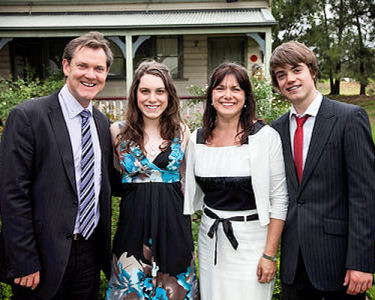 Martin Coleman (1965) Married Patricia Vineburg (1966) in 1988 Martin Coleman (1965) Married Patricia Vineburg (1966) in 1988& they are here with Daughter Ciara (1992) & Son Matthew (1994) |
2003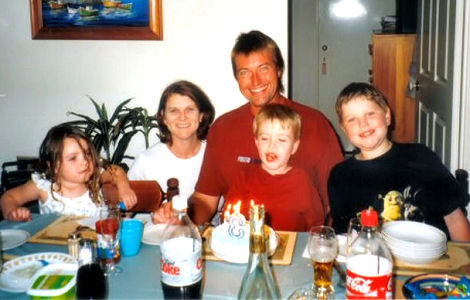 Bernadette Coleman (1968) married Peter McLellan (1967) in 1991and Bernadette Coleman (1968) married Peter McLellan (1967) in 1991and they are here with Sons Conor (1995), Luke (2000) & Daughter Siobhan (2000) |
2022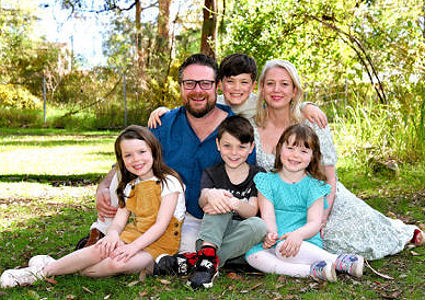
Kieran Coleman (1977) married Janelle Mackee (1976) in 2009 and they are here with Sons Flynn (2012) (B) & Cillian (2013) and Daughters |
2009 & Later
Extended Family of 3 Generations: Martin & Patricia with their Children and Grandchildren
Martin & Patricia Coleman's Family Tree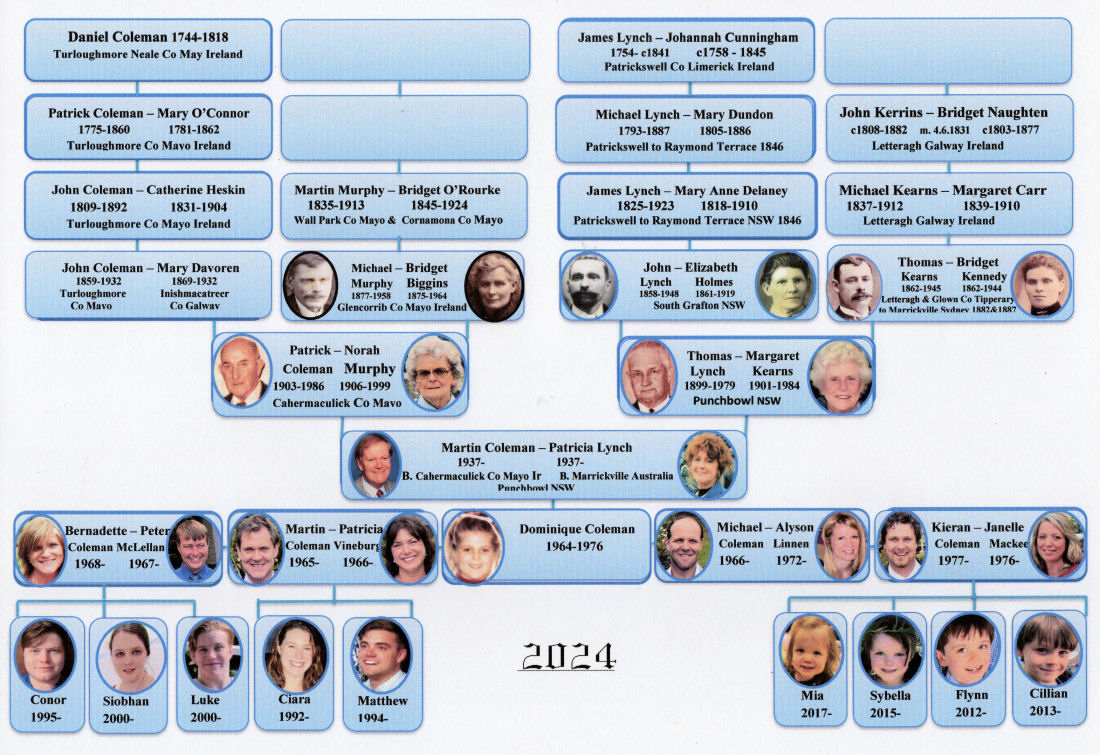
4th Generation
Special prize awaits the one to claim this space!
Back to Family Centres - Forward to Sydney Page 3 (Delia Coleman)
 Clan Coleman
Clan Coleman
